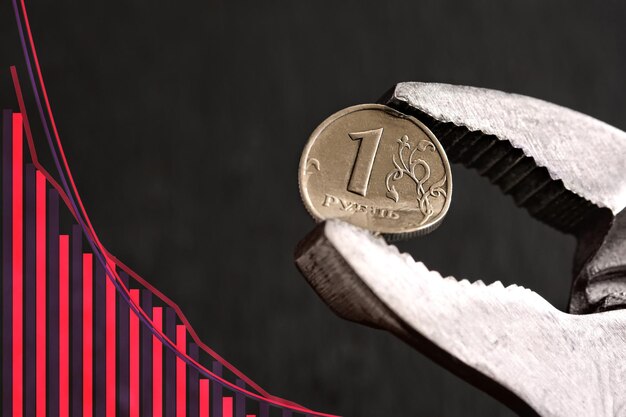Bitcoin, the world’s first decentralized cryptocurrency, has gained immense popularity since its creation in 2009. As a virtual currency, bitcoin exists only in digital form, and its appearance is quite different from traditional physical forms of money, such as coins and banknotes. So, what does a bitcoin actually look like?
Visually, a bitcoin is represented by a unique combination of numbers and letters, known as a bitcoin address. This address serves as a virtual “bank account” for each bitcoin user, allowing them to send and receive bitcoins securely. Each bitcoin address is also associated with a corresponding private key, which is essential for accessing and managing the bitcoins stored in that particular address.
While a bitcoin address may not have a physical representation, its value and importance in the world of cryptocurrency cannot be underestimated. The address is created using complex cryptographic algorithms, ensuring the security and integrity of bitcoin transactions. It is through these addresses that the ownership and transfer of bitcoins are tracked and verified on the blockchain, a public ledger that records all bitcoin transactions.
Exploring the Anatomy of a Bitcoin
Bitcoin, the most well-known cryptocurrency, is often referred to as digital gold. But what exactly does a bitcoin look like? In reality, bitcoins themselves are not physical objects or coins that you can hold in your hand. Instead, bitcoins exist solely in a digital form, making them intangible and completely virtual.
So, if bitcoins don’t have a physical appearance, what does it mean to explore their anatomy? When discussing the anatomy of a bitcoin, we are referring to the various components and features that make up the cryptocurrency and allow it to function. Let’s dive deeper into these elements:
- Blockchain: At the core of bitcoin’s anatomy is the blockchain, a public ledger that records all bitcoin transactions. This decentralized network of computers ensures the transparency and security of the currency by verifying and recording every transaction made.
- Wallets: Bitcoin wallets are digital tools that allow users to store, send, and receive bitcoins. A wallet consists of a pair of cryptographic keys – a public key for receiving funds and a private key for signing transactions. These keys are essential for accessing and managing bitcoin holdings.
- Addresses: Bitcoin addresses are alphanumeric strings that serve as identifiers for sending and receiving bitcoins. They are similar to email addresses, but instead of receiving messages, bitcoin addresses receive funds. Each address corresponds to a particular bitcoin wallet and is associated with a unique public key.
- Transactions: Bitcoin transactions are the transfer of bitcoins between different addresses. These transactions are included in the blockchain and are verified by miners, who ensure the accuracy and validity of the transactions. Each transaction contains information about the sender, recipient, and the amount of bitcoins being transferred.
- Mining: Bitcoin mining is the process by which new bitcoins are created and added to the blockchain. Miners solve complex mathematical problems using powerful computers to validate transactions and add them to the blockchain. In return for their efforts, miners are rewarded with newly minted bitcoins.
- Satoshi: The smallest unit of bitcoin is called a satoshi, named after the pseudonymous creator of bitcoin, Satoshi Nakamoto. One bitcoin is equivalent to 100 million satoshis, allowing for microtransactions and precise value representation.
- Decentralization: A fundamental aspect of bitcoin’s anatomy is its decentralized nature. Bitcoin operates on a peer-to-peer network, where transactions are verified by multiple participants rather than a central authority. This decentralization ensures the security, privacy, and trustworthiness of the currency.
Although a bitcoin may not have a physical appearance like traditional coins or banknotes, its anatomy and underlying technology make it a remarkable and revolutionary form of currency. Understanding the various components and features of bitcoin is essential for those looking to explore and participate in the world of cryptocurrency.
The Iconic Bitcoin Logo and Symbol
The Bitcoin logo and symbol are instantly recognizable in the world of cryptocurrency. Since its inception in 2009, Bitcoin has developed a distinct visual identity that represents the groundbreaking digital currency.
The Bitcoin logo consists of two parts: the letter “B” with two vertical lines through it and a circle that encloses the letter. The logo is designed in a stylized font that gives it a modern and futuristic look.
The logo reflects the core principles and features of Bitcoin. The letter “B” represents the currency itself, while the vertical lines denote blockchain technology, which is the underlying technology behind Bitcoin. The circle symbolizes the decentralized nature of Bitcoin, highlighting its independence from central banks and traditional financial institutions.
The Bitcoin symbol, on the other hand, is a combination of the letter “B” and the ₿ symbol, which represents Bitcoin’s currency code. The symbol is often used to denote the price or value of Bitcoin in financial charts and media articles.
To further enhance the recognition and distinctiveness of the Bitcoin logo, several color schemes have been used. The most common color combination is orange for the letter “B” and circle, while the vertical lines are often depicted in white. This color scheme has become synonymous with Bitcoin and is widely used in various designs and promotional materials.
Evolution of the Bitcoin Logo
Over the years, the Bitcoin logo has gone through subtle changes and iterations. In its early days, the logo featured a different font style, with a more rounded “B” and thinner vertical lines. However, as Bitcoin gained popularity and recognition, the logo design was refined to its current distinctive form.
The current Bitcoin logo is the result of careful consideration and community feedback. It has become an iconic symbol that represents the innovation and potential of digital currency.
Usage of the Bitcoin Logo
The Bitcoin logo and symbol are widely used in various applications and mediums. They can be found on cryptocurrency exchanges, wallets, and payment processors. Merchants and businesses that accept Bitcoin often display the logo to show their support for the digital currency.
The Bitcoin logo has also become a popular symbol for merchandise and apparel related to cryptocurrency. T-shirts, hoodies, and accessories featuring the logo are common among Bitcoin enthusiasts and supporters.
| Bitcoin Logo | Bitcoin Symbol |
|---|---|
 |
 |
Different Types of Physical Bitcoins
Although bitcoin is a digital currency, there have been attempts to create physical representations of it in the form of coins or tokens. These physical bitcoins come in various designs and materials, and they serve as collectibles or novelty items rather than being used for transactions.
Here are some different types of physical bitcoins:
- 1. Casascius Coins: Casascius coins were created by Mike Caldwell and were among the first physical bitcoins. They were issued between 2011 and 2013 and are made of brass, with a hologram sticker on the back that contains the private key. The hologram is tamper-evident and serves as a security feature. Casascius coins come in different denominations and are highly sought after by collectors.
- 2. Denarium Coins: Denarium coins are physical bitcoin coins produced in Finland. They come in different denominations and are made of various materials, including brass, copper, and silver. The private key is hidden behind a hologram sticker or a coin peel, ensuring the security of the coin. Denarium coins are popular among both collectors and bitcoin enthusiasts.
- 3. Titan Coins: Titan coins are physical bitcoins that are made of pure silver or gold. They are produced by a company called Titan Mint and feature intricate designs. The private key is etched onto the coin itself, ensuring its security. Titan coins are limited in supply and often sold at a premium.
- 4. Cryptmint Coins: Cryptmint coins are physical bitcoins created by Cryptmint. They are made of different metals, including gold, silver, and bronze. Each coin comes with a unique design and a tamper-evident hologram sticker. The private key is embedded within the coin’s design, adding to its security. Cryptmint coins are popular among collectors and make for unique gifts.
These are just a few examples of the different types of physical bitcoins that exist. Each coin offers a unique design and varying levels of security. While they may not be the same as traditional physical currency, they provide a tangible way for individuals to engage with bitcoin on a physical level.
Digital Representation of Bitcoins
Bitcoins, being a digital currency, do not have a physical form like traditional coins or paper currency. Instead, they exist solely in digital form and are stored in virtual wallets. The digital representation of bitcoins is based on a unique combination of cryptography and decentralized technology known as blockchain.
Each bitcoin is created through a process called mining, where powerful computers solve complex algorithms to validate and record transactions on the blockchain. The blockchain serves as a public ledger that keeps track of all bitcoin transactions, ensuring transparency and security.
While bitcoins themselves do not have a physical representation, they are often visually represented as a symbol or logo that resembles a gold coin with the letter “B” in the center. This logo is used to identify and represent bitcoins in various online platforms and applications.
Additionally, bitcoins can be represented in numerical form, often with decimal places to account for smaller denominations. For example, one bitcoin can be represented as 1.00000000 BTC, and smaller amounts can be represented as 0.00100000 BTC or 0.00000001 BTC.
It is important to note that the digital representation of bitcoins is purely symbolic and does not have any intrinsic value. The value of bitcoins comes from their scarcity and the demand for them in the market, which can fluctuate based on various factors such as supply and demand dynamics, market sentiment, and regulatory developments.
In conclusion, bitcoins have a digital representation that is based on cryptography and the blockchain technology. While they do not have a physical form, they are visually represented as a symbol or logo resembling a gold coin with the letter “B”. The value of bitcoins comes from their scarcity and market demand.
Visualizing Bitcoin Transactions on the Blockchain
Bitcoin transactions are recorded on a decentralized ledger called the blockchain. However, understanding the complexity and volume of these transactions can be challenging. Visualizations can provide a clearer picture of how transactions are created, verified, and added to the blockchain.
One common way to visualize Bitcoin transactions is through a transaction graph. This graph represents transactions as nodes, with edges connecting input and output addresses. Nodes can have different shapes and colors depending on their type, such as regular transactions or coinbase transactions.
Another visualization technique is to display transaction volume over time. This can be done with the help of a line graph, where the x-axis represents time and the y-axis represents the amount of Bitcoin being transacted. This graph can reveal patterns and trends in transaction activity, such as spikes during certain periods or fluctuations over time.
Additionally, block explorers provide visual representations of the blockchain. These tools allow users to search for specific transactions or addresses and view detailed information about them. They often include visual displays such as tables that show transaction details, addresses involved, and the amount transferred.
| Transaction ID | Input Address | Output Address | Amount (BTC) |
|---|---|---|---|
| 123456789 | 1A1zP1eP5QGefi2DMPTfTL5SLmv7DivfNa | 1M8s2S5bgAzSSzVTeL7zruvMPLvzSkEAuv | 0.5 |
| 987654321 | 1M8s2S5bgAzSSzVTeL7zruvMPLvzSkEAuv | 1A1zP1eP5QGefi2DMPTfTL5SLmv7DivfNa | 0.3 |
These visualizations help users understand the flow of transactions, identify patterns, and analyze the behavior of addresses or specific transactions. They can be useful for researchers, traders, and enthusiasts who want to explore the Bitcoin blockchain in more detail.
The Future of Bitcoin: Imagining the Possibilities
Bitcoin has come a long way since its inception in 2009. As the first decentralized digital currency, it has disrupted traditional financial systems and ignited a crypto revolution. But what does the future hold for Bitcoin? Let’s take a look at some of the possibilities that lie ahead.
1. Mainstream Adoption
Bitcoin has already gained popularity among tech-savvy individuals and early adopters. However, the future could see widespread acceptance of Bitcoin as a mainstream form of payment. With more companies accepting Bitcoin as a valid currency, people may be able to use it for everyday purchases like groceries, gas, and even online shopping.
2. Financial Inclusion
One of the most promising aspects of Bitcoin is its potential for financial inclusion. In many parts of the world, individuals lack access to traditional banking services. Bitcoin offers an alternative, allowing unbanked individuals to store and transfer funds securely. The future could see Bitcoin bridging the gap and providing financial services to the underserved population.
3. Enhanced Security and Privacy
As technology evolves, so does the potential for enhanced security and privacy in Bitcoin transactions. The future may bring advancements in cryptography and privacy protocols, making Bitcoin even more secure and anonymous. This could alleviate concerns related to data breaches and identity theft, further bolstering Bitcoin’s reputation as a safe and reliable digital currency.
4. Smart Contracts and Decentralized Applications
Bitcoin’s underlying technology, blockchain, has paved the way for the development of smart contracts and decentralized applications (DApps). These applications have the potential to revolutionize various industries, such as finance, supply chain management, and healthcare. In the future, we may see Bitcoin being utilized as the foundation for advanced DApps, enabling transparent and efficient transactions without intermediaries.
5. Global Reserve Currency
While it is still too early to predict, some speculate that Bitcoin could one day become a global reserve currency. With its limited supply and decentralized nature, Bitcoin could offer stability and independence from traditional fiat currencies. This would require widespread adoption and acceptance by governments and financial institutions, but the future could hold a world where Bitcoin plays a significant role in the global economy.
| Possibility | Description |
|---|---|
| Mainstream Adoption | Bitcoin becoming widely accepted as a form of payment for everyday purchases. |
| Financial Inclusion | Bitcoin providing financial services to the unbanked population. |
| Enhanced Security and Privacy | Advancements in cryptography and privacy protocols to make Bitcoin more secure and anonymous. |
| Smart Contracts and Decentralized Applications | Bitcoin being utilized as the foundation for advanced DApps. |
| Global Reserve Currency | Bitcoin potentially becoming a global reserve currency in the future. |
Question-answer: What does a bitcoin look like
How does the Bitcoin network validate and record new transactions, and what role do miners play in this process?
The Bitcoin network validates and records new transactions through a consensus mechanism called proof of work. Miners use computational power to solve complex mathematical puzzles, adding new transactions to a new block on the blockchain.
What is the significance of the mining process in the Bitcoin ecosystem, and how does it contribute to the security and decentralization of the network?
The mining process in the Bitcoin ecosystem is crucial for securing the network and maintaining decentralization. Miners compete to validate transactions, and the first to solve the puzzle adds a new block to the blockchain, ensuring the integrity and security of the entire system.
How does a digital wallet function in the context of Bitcoin, and what are the key differences between a digital wallet and a hardware wallet?
A digital wallet is a software application that allows users to store, send, and receive Bitcoin. A hardware wallet, on the other hand, is a physical device that provides an extra layer of security by keeping private keys offline, reducing the risk of online hacking.
What role do Bitcoin ATMs play in the buying and selling of Bitcoin, and how do they enhance the accessibility of cryptocurrencies?
Bitcoin ATMs enable users to buy and sell Bitcoin with physical cash. These machines enhance accessibility by providing a physical point for transactions, allowing users to interact with cryptocurrencies beyond online exchanges.
How does the proof-of-work consensus mechanism contribute to the understanding of Bitcoin’s value and scarcity?
The proof-of-work consensus mechanism, used in Bitcoin mining, underlines the concept of scarcity and value. The computational effort required to mine each new Bitcoin reflects the resource-intensive process, contributing to the perceived value and finite supply of Bitcoin.
What is the role of transaction fees in the Bitcoin network, and how do they impact the speed and priority of transactions?
Transaction fees incentivize miners to prioritize certain transactions. Users can attach higher fees to expedite their transactions, ensuring faster confirmation. This mechanism helps maintain the efficiency of the Bitcoin network.
How does a cold wallet differ from a hot wallet, and why might users prefer a cold wallet for storing their Bitcoin?
A cold wallet is an offline storage solution, while a hot wallet is connected to the internet. Users may prefer a cold wallet for enhanced security since it is less susceptible to online threats, making it an ideal choice for long-term storage of Bitcoin.
What is the genesis block, and how does it hold historical significance in the creation of Bitcoin?
The genesis block is the first block in the Bitcoin blockchain, mined by Satoshi Nakamoto in 2009. It holds historical significance as the starting point of the entire Bitcoin network and includes a hidden message referencing the financial crisis.
How does the US Financial Crimes Enforcement Network (FinCEN) relate to Bitcoin, and what regulations apply to individuals or entities dealing with Bitcoin as a money transmitter?
FinCEN regulates Bitcoin and other cryptocurrencies to prevent money laundering and illicit activities. Individuals or entities dealing with Bitcoin as a money transmitter are subject to specific regulations, including KYC (Know Your Customer) and AML (Anti-Money Laundering) requirements.
What makes Bitcoin a store of value, and how does it compare to other digital assets like Bitcoin Cash or Bitcoin Gold?
Bitcoin’s limited supply of 21 million coins, combined with its decentralized nature and widespread acceptance, contributes to its store of value characteristics. Bitcoin Cash and Bitcoin Gold are alternative cryptocurrencies with different features and goals, often seen as separate entities within the broader cryptocurrency ecosystem.






No responses yet